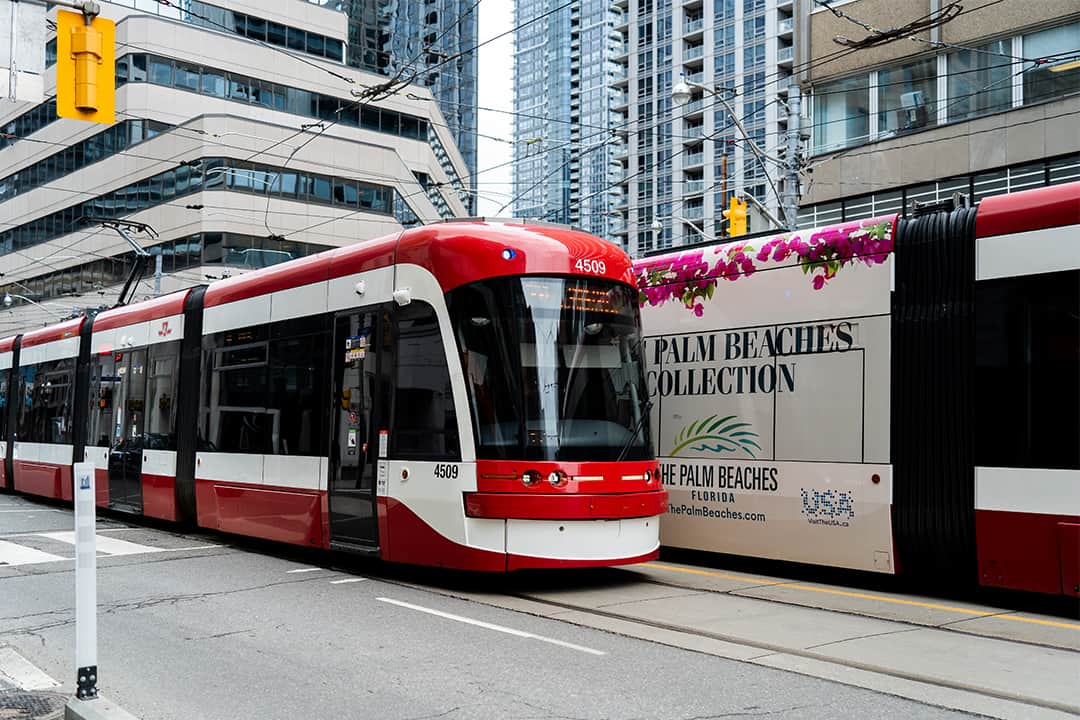Among Toronto’s many iconic symbols, none perhaps are as quintessentially Torontonian as its streetcars. However, a closer examination reveals a system struggling to keep up with the demands of a modern, bustling city. The streetcar system is plagued by delays and detours. The question is, then, why are streetcars so inefficient?
The King Street dilemma
The first electric streetcar made its debut in Toronto in 1892 on Church Street, heralding a new era of mobility that would shape the city’s landscape until the present day. Fast-forward to the modern day, on King Street, it is shameful to see what was once a symbol of efficient urban transportation become a source of frustration for commuters, including myself.
King Street is one of Toronto’s busiest streets, with about 84,000 commuters on an average weekday. Despite this transit artery’s popularity, travel times of the 504 King streetcar’s travel time from Bathurst to Jarvis frequently topped one hour from May to November of 2023. This is unacceptable for a route with presumed transit priority.
It is no surprise that drivers are a major problem — just take a look at this Toronto Star article that counted 31 drivers breaking traffic laws at King and Yonge in under an hour. Another Toronto Star article writes: “According to one recent University of Toronto study, there are roughly 6,800 illegal turns and through movements made on the transit priority corridor per day — but less than 0.3 per cent of the infractions are ticketed by Toronto police.” Single cars often attempt illegal turns and get stuck in an intersection, preventing streetcars from running properly along their assigned route.
Despite designated lanes, streetcars frequently find themselves at the mercy of errant vehicles blocking their tracks. Time and again, we witness streetcars at a standstill — powerless against the cars that impede upon their domain.
The way forward
Let me be clear: Toronto’s streetcars are failing because of decision-makers and decades of neglectful transit policy. In 2019, the TTC released a report claiming it needed $33.5 billion in capital investment over the next 15 years to stay afloat. At that point, according to Toronto Star transportation reporter Ben Spurr, it didn’t have funding for $27.3 billion of those costs.
Amid its downfalls, there remains hope for Toronto’s streetcars. My preferred solution lies in reimagining the way we use streetcar infrastructure.
Clear signage and physical barriers have proven to be game-changers in numerous urban areas. A 2013 study titled Reducing Conflicts Between Motor Vehicles and Pedestrians: the Separate and Combined Effects of Pavement Markings and a Sign Prompt found that something as simple as pavement markings reduced the possibility of collisions and increased yielding distance on the road. Thus, well-designed signage, coupled with physical deterrents, can significantly reduce traffic violations and improve road safety. By implementing these measures on King Street, the city can create a safer environment that encourages compliance with traffic regulations.
Case studies from cities in England like Birmingham show streetcar systems that barely interact with mixed transit modes — some don’t even run on roads at all. Providing exclusive lanes for streetcars not only improves their reliability and efficiency but also encourages a modal shift, enticing more people to choose public transit over private vehicles. If streetcars don’t get stuck in traffic, people will be more inclined to take the quicker way.
Furthermore, restricting car access to King Street aligns with emerging trends in urban design and transportation planning aimed at prioritizing pedestrian-friendly spaces by reducing reliance on private vehicles, especially within city centers. Barcelona’s “Superblock” project has implemented car-free zones in key downtown areas, leading to improvements in air quality, pedestrian safety, and overall aesthetics of the city.
We need streetcars
While Toronto’s streetcars remain an enduring symbol of the city’s identity, their inefficiency highlights the pressing need for investment and modernization. Despite their historical significance, the current streetcar system remains ill-equipped due to historical underfunding and maintenance neglect to successfully meet the demands of a rapidly growing city.
Chronic delays, detours, and disruptions undermine streetcars’ reliability and effectiveness as a mode of public transit. Addressing these challenges requires a concerted effort to modernize infrastructure, improve operational efficiency, and prioritize streetcar-friendly policies. By revitalizing and investing in the streetcar network, Toronto can not only preserve a beloved part of its heritage but also ensure that it remains a viable and sustainable transportation option for years to come.
Emily Carlucci is a third-year student at Trinity College studying political science and English. She is the Urban Planning columnist for The Varsity’s Comment section.


